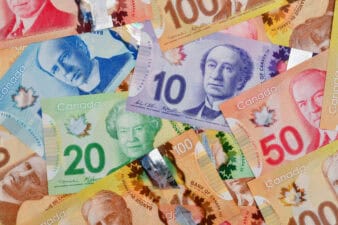Many investors when choosing to invest in oil explorers and producers make the mistake of using generic valuation ratios to assess whether they are a worthwhile investment. Typically these ratios do not provide investors with a comprehensive picture of the company due to the capital-intensive nature of the industry and specific factors which can impact the operations of oil companies.
Let’s take a closer look at a key measure of the profitability of oil explorers and producers, the netback per barrel of crude produced.
What is netback per barrel?
An oil company’s netback per barrel of crude produced, measures the profitability of an oil companies upstream operations, which is the amount of revenue an oil company generates for each barrel of oil it produces and sells.
Netback per barrel is calculated by taking the average realized price per barrel of crude sold less royalties as well as production and transportation costs. It allows investors to compare the profitability of the operations of various oil companies over a specific period and across different companies.
A high netback per barrel of oil produced indicates an oil company’s operations are more profitable, than those with a low netback. Typically, the industry average netback per barrel of oil produced in North America is around $42 per barrel of crude.
Oil companies in the patch with impressive netbacks
Two companies that appear attractively priced on the basis of their enterprise-value to EBITDA, oil reserves and barrels of oil produced daily otherwise known as price per flowing barrel are Penn West Petroleum (TSX: PWT)(NYSE: PWE) and Pengrowth Energy (TSX: PGF)(NYSE: PGH).
Let’s take a closer look at those companies and see how they shape up in comparison to their peers on the basis of their netback per barrel of oil produced.

One of the best netbacks in the patch is Lightstream Resources (TSX: LTS), which at over $56 per barrel of crude is well above the industry average. It also has a relatively low EV-to-EBITDA in comparison to its peers, highlighting that not only is its production highly profitable but it is attractively priced on the basis of that metric.
Other impressive netbacks include Crescent Point Energy’s (TSX: CPG)(NYSE: CPG) $53 per barrel and Canadian Oil Sands’ (TSX: COS) $52 per barrel. But both appear expensive in comparison to their peers on the basis of their EV-to-EBITDAs and EV as a multiple of barrels of crude produced daily.
Investors should also note, on the basis of their netbacks Pengrowth and Penn West appear unattractive despite their relatively cheap valuations, with both having netbacks well below the industry average.
This indicates that their production is not as profitable as their peers’ and they have some way to go in order to boost their margins. A key driver of this was the companies’ attempts to aggressively expand their operations, which saw them purchase and develop a number of marginal oil and gas assets.
Since then Pengrowth and Penn West have embarked on implementing turnaround strategies, which have driven higher netbacks and strengthened their balance sheets as they divest themselves of non-core and low quality assets. Netbacks for Pengrowth and Penn West are expected to continue growing with both seeing their turnaround strategies gain further traction, which is boosting higher margin crude production while reducing operating costs.
Clearly a cheap or attractive valuation is a compelling reason to invest, but investors also need to evaluate the profitability of an oil company’s operations, and this can be determined by way of the netback per barrel of crude produced. In this case, Lightstream Resources is the most appealing investment with an impressive netback in excess of $56 coupled with an attractive EV-to-EBITDA ratio.
Both Penn West and Pengrowth — while appearing cheap on the basis of their EV-to-oil reserves and price-per- flowing-barrel — have substandard netbacks that are well below the industry average. Finally, netback per barrel and the three industry-specific valuation ratios previously discussed, still do not provide investors with the full picture.








